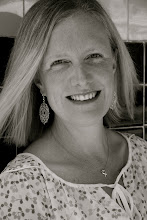
We had a near plumbing disaster at home last Friday. About half an hour before needing to pick up kids from school and preschool the toilet started making very strange noises. There was lots of banging and crashing from the bowels of the bathroom. At one point I felt the floor vibrate. The water in the toilet bowl was swirling and I wondered whether a waterfall of sewage would flood the bathroom at any moment. So, I did what any one with no plumbing knowledge would do. I closed the bathroom door, put my toddler in the pram and left the house.
When we returned from the school pick up, the toilet had stopped making the thudding noise but when I turned on the kitchen tap to get the kids a drink, the water was cloudy and dirty. What was going on? I started to panic: the Friday evening before a long weekend was hardly ideal for finding a plumber and if we couldn’t find one straight away, how could we stay here without a flushing toilet or running water?
It turns out panicking was unnecessary. The Water Board was working on some problem in the street and disturbed the pipes. Once the air bubbles cleared after running the taps for a few minutes, life was back to normal. But it got me thinking that evening as we munched on pizza. The thought of a house without plumbing that worked seemed catastrophic yet for the family who lived in my house when it was built in the 1880s that would have been normal.
When we moved into this house, the previous owners left behind spare keys, a swing in the backyard and a A4 sheet titled ’House History’. We are the eighth owners here, a painter named John Liddell and his wife Elizabeth were the first.
During the 1870s, the local press wrote about Sydney being an ‘unwholesome’ place. Sickness was everywhere: smallpox, cholera, typhoid, measles and diphtheria killed both adults and children. Mortality levels were higher here than they were in London.
Reading the book Leichhardt, On the margins of the city, by Max Solling and Peter Reynolds, I discover more. In the inner suburbs, where we live, ‘people still relied on the pan and cesspit for their sanitation... open sewers ran along the lanes fronting tenement housing. Supplies of piped water were irregular and drinking water wells were often contaminated by seepage from cesspits.’
As well as the smells of raw sewage, John and his wife Elizabeth would have lived with the strong smells of the jam, pickle and sauce manufacturers; meat-packing and preserving firms; and Pearson’s soap factory. There were also 33 dairies in the area and many people kept a cow and chickens in the backyard. I can’t imagine fitting a cow in our backyard although our house in its original state would have only been two rooms upstairs and two downstairs.
Actually I hope their family did have a cow because if they didn’t they would have needed to buy their milk from the corner store where it would have been ‘ladled out to customers from open buckets exposed to flies and dust’.
So while the Liddell’s who inhabited our home may have had room for a couple of cows, inside would have been significantly more crowded. The average family had seven children in the late 1800s. The children born into our home would have been described as coming from ‘the lowest strata of society’. In an attempt for urban social reform, free kindergartens began at this time to ‘improve the lot of inner-city children’. It was also hoped that ‘through the children families could be taught middle-class norms’.
If John and Elizabeth Liddell could have seen me last Friday, sitting in my heated living room, worrying about slightly cloudy running water and a noisy toilet I imagine they would have been laughing. Quite raucously too I hope, given their supposed lack of ‘middle-class norms’.

1 comment:
Appreeciate this blog post
Post a Comment